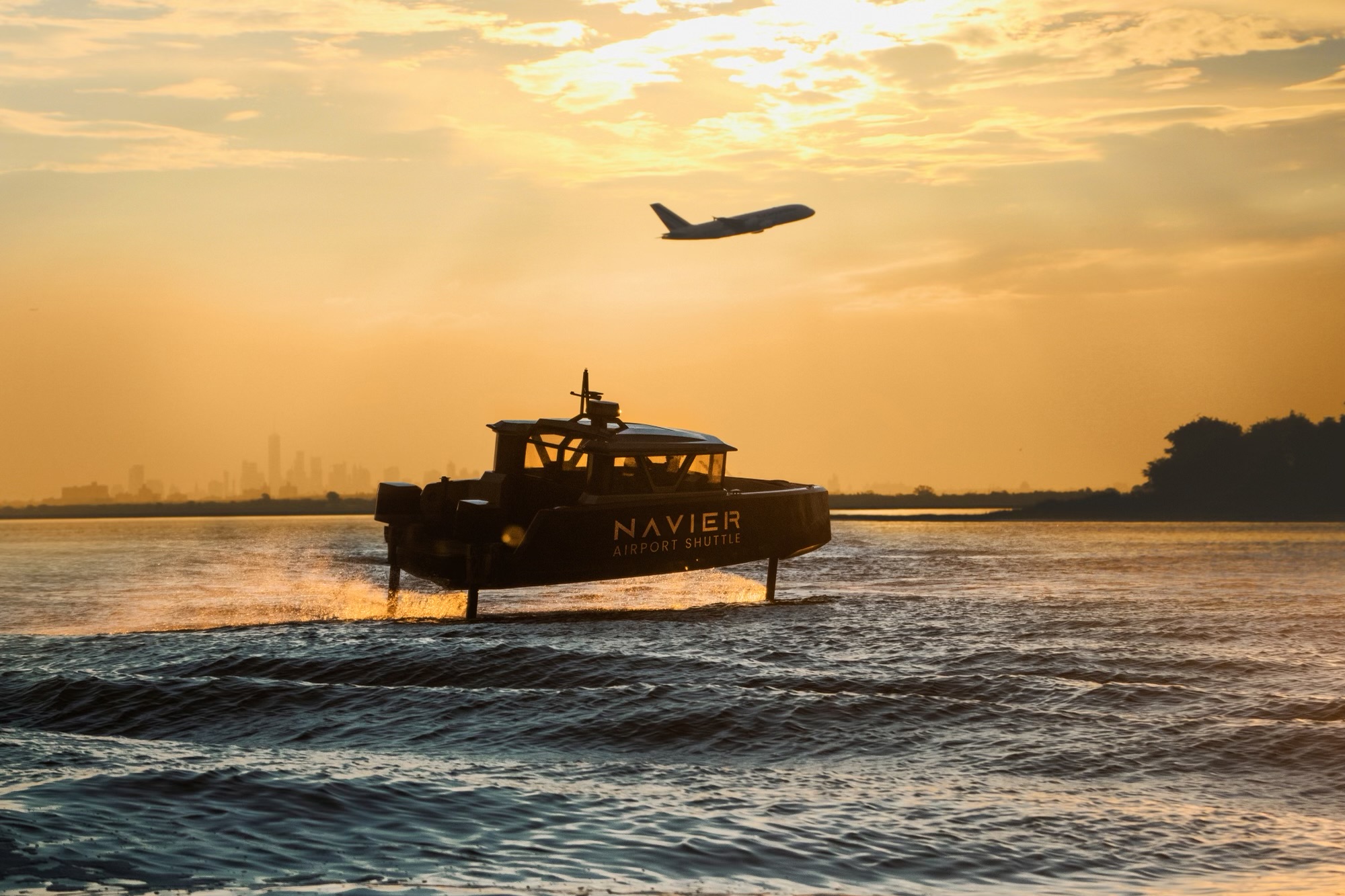Navier, the electric “flying water taxi” company whose pollution-free hydrofoils enable them to zip almost silently across bodies of water, wants to eliminate one of the most stressful voyages of all: the drive to the airport.
The 4-year-old company (pronounced “NAV-ee-ay”) which builds its boats in Maine, has secured landing rights to Coyote Point Recreation Area, a park with a marina just south of San Francisco International Airport. From there, shuttles would drive passengers roughly 5 miles to the airport, addressing what’s known as the “last-mile problem.”
Navier is working to procure docking space from several points of origin in Marin County and the East Bay, focusing on waterfront areas that are far from a direct transit connection to SFO already.
“Ten percent of Bay Area traffic is to the airports,” Navier co-founder Sampriti Bhattacharyya said. “In rush hours, it’s a nightmare—and most airports are close to a marina.”
Reached for comment, a spokesperson for SFO said the airport was unfamiliar with Navier.
In the meantime, the company, which delivered its first-generation vessel in 2022, announced a pilot project this week with financial services firm Stripe. Starting in March, Navier will offer shuttle service from Larkspur Ferry in Marin County to Stripe’s headquarters in Oyster Point, a bayside tech haven in South San Francisco that’s time-consuming to reach via car and almost impossible to reach without one.
From one six-passenger boat servicing Stripe, Navier hopes to expand to five to seven boats, or a larger, 30-person craft. Bhattacharyya calls the partnership the perfect case study for a potential expansion into airport transit. “We’ll learn what fails and what works,” she said. “This will drive the data for building reliable systems and diagnostic infrastructure” for a larger fleet.
The idea of white-collar workers bypassing a soul-crushing Bay Area commute may conjure the image of a nautical Google Bus. But Bhattacharyya believes the analogy is inaccurate. Run as shuttles, Navier’s 30-passenger vessels can take up to 120 cars off the road each day, all without swapping in other massive vehicles that add to street traffic and idle at city bus stops.
“Waterways are super-underutilized infrastructure,” she said. “And suddenly, places that are two hours away in traffic by land become 30 to 45 minutes away by water. Alameda to Oyster Point is another exceptionally compelling case study.”
Elected officials have taken notice. While Sausalito is already served by Golden Gate Transit’s ferry network, City Council member and former mayor Melissa Blaustein wants Navier’s all-electric ferries to complement that existing system through another pilot project that would connect Sausalito to the East Bay, which currently lacks a direct connection. She’s hopeful that those trips could begin as soon as this year, although the exact destinations are yet to be determined.
“Not only is Sausalito a tourist hub, but this is an opportunity for us to demonstrate that we’re a strong climate hub,” Blaustein said. “As a waterfront community, we have a unique opportunity to change how transportation works.”
Seamus Murphy, the executive director of the Water Emergency Transportation Authority, the regional body that oversees ferry service on San Francisco Bay, is similarly excited about Navier’s advancements in hull design, which could lead to reduced emissions.
“Energy is hard to come by, and it’s expensive and getting it to be enough to power a boat is a difficult thing to do,” Murphy said. “We’re a commuter ferry system, so a vessel that carries six people doesn’t do a lot for us. Once they get up to 150 people, that starts to be a vessel that’s usable for us.”
San Francisco Bay Ferry’s boats already run on renewable diesel, making it the cleanest such fleet in the country, he said. And the newest generation of boats uses 40% less fuel than the ones put into service only five years ago. So Navier’s vision of taking thousands of cars off the road is hardly a tailpipe dream.
“We know it’s feasible, because we already do it,” Murphy said.
